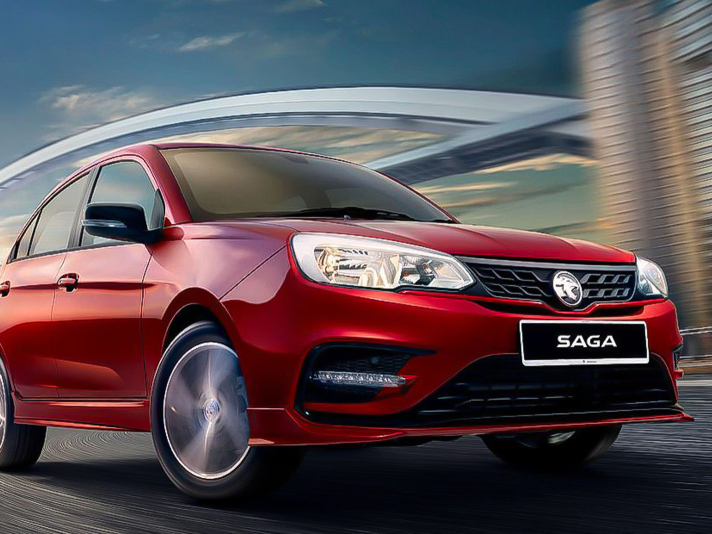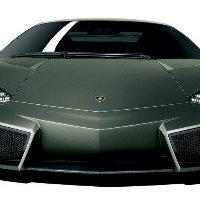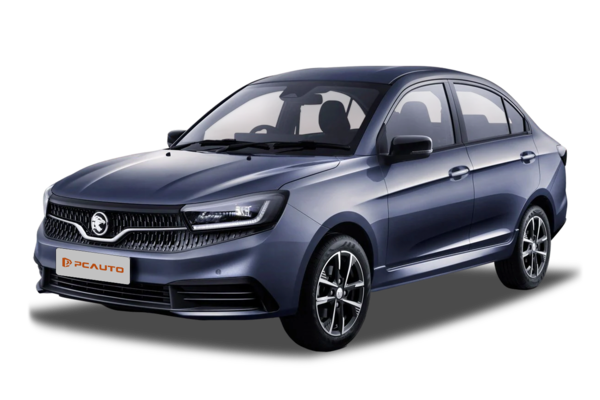Q
how to drive proton saga
When driving the Proton Saga, the first thing is to get familiar with the basic operations. Before starting the vehicle, adjust the seat and mirrors to ensure a comfortable and safe field of view. Buckle up, insert the key and start the engine. For automatics, simply shift it into D gear; if you're in a manual, step on the clutch and shift into 1st. Release the brake gently and press the accelerator slightly to start moving—keep the acceleration smooth to avoid any jerks. The Saga's 1.3L engine is a solid fit for city driving. I’d recommend shifting between 2,500 - 3,000 RPM to strike a good balance between fuel economy and power performance. When making a turn, control your speed—since the car’s on the lighter side, sharp turns may cause instability. On rainy days, turning on ECO mode helps reduce the risk of wheel slip. Don’t skip regular checks: regularly checking tire pressure and the brake system can significantly improve handling safety. The ABS and EBD systems also play their roles, helping you maintain vehicle stability during emergency braking. Oh, and if you’re driving a manual, using engine braking (downshifting) can help extend your brake life. Once you get the hang of these tips, the Saga becomes a pretty straightforward daily driver. New to driving? Start by practicing throttle and clutch control in an empty lot first. Get a feel for how the car handles before venturing into busier streets.
Special Disclaimer: This content is published by users and does not represent the views or position of PCauto.
Related Q&A
Q
What is the fuel consumption of the 2018 Holden Spark?
The 2018 Holden Spark is a budget-friendly city car that delivers fuel economy well-suited for Malaysian urban commuting. According to official figures, the manual transmission variant returns a combined fuel consumption of around 5.4L/100km, while the automatic version is slightly higher at approximately 5.8L/100km. Real-world fuel usage may vary slightly depending on driving habits, road conditions, and air conditioning usage. Powering this car is a 1.4-liter four-cylinder engine, offering smooth performance and low maintenance costs—ideal for budget-conscious young drivers or as a second family car. Given Malaysia's hot climate, regular maintenance of the fuel system and cabin air filter is recommended to maintain optimal fuel efficiency. Additionally, RON95 petrol is sufficient for this vehicle; there's no need for higher-octane fuel. For consumers prioritizing fuel efficiency, other models in the same segment like the Perodua Axia or Proton Saga are also worth considering, as they’re equally known for their economical nature. However, the final choice should come down to personal preference and test drive experience.
Q
What is the fuel consumption of Proton Saga 2018?
The official fuel consumption figures for the 2018 Proton Saga are 5.6 to 6.0 liters per 100 kilometers (exact numbers vary based on driving conditions and transmission type). It's powered by a 1.3-liter VVT engine paired with either a 4-speed automatic or 5-speed manual gearbox. This budget-friendly sedan delivers a balanced performance in both city and highway driving, making it ideal for daily commutes.
Fuel efficiency is influenced by several factors, including driving habits, road conditions, and vehicle maintenance. To keep fuel economy at its best, it's a good idea to regularly check tire pressure and maintain the engine properly. As a homegrown Malaysian brand, Proton's Saga lineup has always been known for great value and low running costs. The 2018 model also got upgrades to its sound insulation and suspension system, which boosted ride comfort.
If you want to squeeze even more efficiency out of it, try accelerating smoothly, cutting down on sudden braking, and using the air conditioning wisely. These simple habits can help get your fuel consumption closer to those official numbers.
Q
What engine is in the Proton Saga 2018?
The 2018 Proton Saga is powered by a 1.3-liter CamPro VVT naturally aspirated four-cylinder engine. This engine features Variable Valve Timing (VVT) technology, which optimizes intake efficiency at different engine speeds to boost fuel economy and performance. It delivers a maximum output of 94 horsepower and peak torque of 120 Nm, paired with either a 5-speed manual or 4-speed automatic transmission—perfect for city driving and daily commuting needs. As an entry-level sedan from Malaysia's homegrown brand, the Proton Saga has won over many family users with its affordability and reliability. While the engine isn't the most cutting-edge tech-wise, it excels in low maintenance costs and durability, making it well-suited for Malaysia's road conditions and climate. Developed in collaboration with Lotus Engineering, the CamPro engine series has undergone multiple upgrades, resulting in significant improvements in smoothness and fuel efficiency. For budget-conscious buyers seeking a dependable runabout, the 2018 Proton Saga is a solid pick.
Q
How much does it cost to maintain a Proton Saga 2022?
Based on Proton Saga 2022's official maintenance guidelines and real-world conditions in the Malaysian market, the annual upkeep costs for this car typically range from RM800 to RM1,200, though this figure can vary significantly depending on your annual mileage and the specific services required. Of course, this depends heavily on your mileage and the specific services you opt for. For regular servicing – think oil changes, oil filter replacements, and the basics – you're looking at around RM200 to RM300 per session. When it comes time for a major service, which might involve changing brake fluid, transmission oil, and other key components, expect to shell out between RM500 and RM800.
Being a homegrown Malaysian brand, Proton Saga benefits from relatively affordable零部件 prices and an extensive network of service centers, which definitely helps keep long-term ownership costs in check. Sticking to regular maintenance isn't just about prolonging your car's lifespan; it's crucial for keeping you safe on the road too. We always recommend following the maintenance manual to the letter and choosing authorized Proton service centers – that way, you're guaranteed genuine parts and professional expertise under the hood. And if you're watching your wallet, keep an eye out for Proton's occasional service promotions; they can help you trim those costs even further.
Q
How is the ride and handling of the 2022 Proton Saga?
The 2022 Proton Saga keeps the brand's focus on affordability and practicality when it comes to driving feel and handling. The overall setup leans towards comfort, making it a solid fit for Malaysian city roads. It uses a MacPherson strut front and torsion beam rear suspension, which does a decent job soaking up small bumps and road imperfections. Sure, there's noticeable body roll when taking corners at speed, but that's pretty standard for this class of car. The steering is light and easy, even for female drivers, and the CVT gearbox is much smoother than the old 4AT it replaces – though it does feel a bit slow to respond when you hit the gas hard.
One thing that stands out is the Saga's 145mm ground clearance, which gives it an edge when dealing with those common unpaved or rough patches you find around Malaysia. On the safety front, it comes standard with ABS+EBD and dual airbags, while higher trims add stability control – that's pretty competitive for the price point.
The 1.3L engine isn't going to win any drag races, but with 92 horsepower pushing around a car that barely tips the scales over a ton, it's more than enough for zipping around town. The official fuel consumption is 5.6L/100km, so it's easy on the wallet too.
For first-time buyers on a budget, the Saga's well-rounded package, combined with Proton's widespread after-sales network across the country makes it a really compelling choice for an entry-level sedan. If you spend a lot of time stuck in traffic, you'll definitely appreciate that comfortable suspension setup.
Q
What is the warranty on the 2022 Proton Saga?
The 2022 Proton Saga comes with a solid 5-year or 150,000 km factory warranty (whichever comes first), covering key components like the engine and transmission. The anti-rust warranty stretches to 7 years with unlimited mileage. This warranty package is pretty competitive in Malaysia's compact car segment and should help keep long-term ownership costs in check for drivers.
Important to note though – to keep that warranty valid, you've gotta stick to regular servicing at authorized Proton service centers. Skipping that could void your coverage, so make sure you hold onto all those service records, folks. On top of that, Proton throws in 24-hour roadside assistance for extra peace of mind when you're out and about.
Malaysia's hot and rainy weather can really test a car's durability, so going for a model with a lengthy warranty just makes smart sense. Other local players like Perodua also offer similar long-haul warranty deals, so it's worth shopping around before making your final decision.
Q
How reliable is the 2022 Proton Saga?
The 2022 Proton Saga, one of Malaysia's best-selling locally produced entry-level sedans, offers a reliability profile that aligns with expectations for its price point. It is equipped with a 1.3L naturally aspirated engine and a 4-speed automatic transmission. The technology, while proven, is not the latest, but it benefits from its mechanical simplicity and proven reliability over years of market presence. According to owner feedback, the mechanical failure rate is low with proper maintenance, and Proton's nationwide after-sales network simplifies repairs.
In terms of safety, the vehicle comes standard with dual airbags, ABS with EBD, and ISOFIX child seat anchors—a package that is quite competitive for its segment. It should be noted, however, that Electronic Stability Control (ESC) is not available on the base variant. If the budget allows, upgrading to a higher trim level for this feature is recommended.
A noteworthy point is that Proton's quality control has shown consistent improvement following its collaboration with Geely. For the 2022 model year, refinements were made to details such as sound insulation and interior panel gaps. Nevertheless, cost constraints mean that common issues like noticeable wind noise at highway speeds remain. For family users prioritizing economy, the car's 5-year unlimited mileage warranty and low maintenance cost (approximately RM200 per service session) are significant advantages. However, those seeking more advanced driver-assistance technologies would need to consider more advanced models.
Overall, the Saga has proven its long-term adaptability to Malaysia's hot and rainy climate, making it a practical and sensible choice for budget-conscious buyers.
Q
What is the resale value of a Proton Saga?
The Proton Saga, one of Malaysia's most beloved budget-friendly sedans, sees its used car value fluctuate pretty noticeably based on the model year, mileage, condition, and market demand. Industry data shows that a 3-year-old Saga typically retains around 50-60% of its original price, and even at 5 years old, it's still holding steady at roughly 40%. That actually outperforms some competitors in its class, thanks to its low maintenance costs, widespread after-sales network, and solid market reputation.
Something to keep in mind: top-spec trims like the Premium S, with their extra features, usually hold 5-8% more value than the base models. And a Saga with a complete, regular service history? That can fetch a 10% premium when you resell. If you're looking to boost your car's resale value, it's smart to hang onto those service records from when it was under the factory warranty and steer clear of major modifications that mess with the original specs.
Also, the Saga's 1.3L engine paired with that tried-and-tested gearbox delivers reliable fuel efficiency – a big checkmark for used car buyers. Malaysia's second-hand car market keeps steady demand for practical, economical rides like the Saga, especially among first-time car owners. So, price it right, and your used Saga should move pretty quick.
Q
Is the 2022 Proton Saga a good first car?
The 2022 Proton Saga makes total sense as a first car. It's got a solid rep in Malaysia for being a great value workhorse – easy on the wallet to buy, even easier to keep running, which is perfect if you're a first-time buyer watching your budget. Under the hood, you've got a 1.3L naturally aspirated engine. Now, it's no rocket ship, but trust me, it's more than enough for zipping around town on your daily commute.
Space-wise, for a small sedan, it's surprisingly roomy. You can squeeze five adults in there without too much hassle, and the boot? A decent 420 liters – plenty for family errands or a weekend getaway. Safety kit? It's got the basics covered: ABS, EBD, and dual airbags. Nothing flashy, but exactly what you'd expect in this price bracket.
One thing that really works for the Saga is Proton's service network. They're all over the country, so getting it serviced or fixed is a breeze. Parts are easy to come by and won't break the bank, which is a big plus when you're just starting out.
Driving it? Super laid-back. The steering is light, the size is just right – not too big, not too small – so navigating tight city streets and squeezing into parking spots is a cinch, even for new drivers. I also dig that they've kept the traditional physical buttons. No messing around with finicky touchscreens for every little thing; you just reach out and press – simple and intuitive. That's a big win for folks who value functionality over fancy tech.
Now, if you're all about the latest gadgets, you might wanna look at something more upmarket. But as an entry-level family car, the 2022 Saga is a really down-to-earth choice. And hey, let's not forget Malaysia's weather – hot and humid with those monsoon downpours. Proton's tweaked the air-con to blow nice and cold, and the body's rust-proofed to handle the elements. It's like they built it specifically for our local conditions. Can't argue with that.
Q
What type of air filter does the 2022 Proton Saga use?
The 2022 Proton Saga is equipped from the factory with a dry, paper-type air filter (typically part number S650310010). This filter employs a multi-layered fibrous structure designed to effectively capture dust, pollen, and other particulate matter while maintaining low intake air resistance, which is essential for the combustion efficiency of the 1.3L CamPro VVT engine. In contrast to the oiled or foam filters common in high-performance applications, these paper filters are cost-effective and designed as disposable replacement items.
The recommended replacement interval is every 15,000 to 20,000 kilometers or once a year. However, this interval should be shortened if the vehicle is frequently driven on dusty or unpaved roads. Particular attention should be paid to regular inspection in Malaysia's tropical climate, as high humidity can accelerate moisture absorption in the filter element. Some owners opt to upgrade to high-flow, reusable air filters like those from K&N or BMC. It is important to note that to fully realize their potential benefits, a professional ECU remap is typically required to properly calibrate the engine's air-fuel ratio for the increased airflow. For typical daily commuting, using a filter that meets original equipment specifications offers the best balance of economy and engine protection.
When selecting a third-party filter, it is crucial to verify that it complies with recognized industry standards such as JIS D1611 or ISO 5011. Low-quality, substandard filters may lead to increased engine wear and reduced fuel economy.
Popular Cars
Model Year
Car Compare
Car Photo
Latest Q&A
Q
How much is 1 horsepower?
Horsepower (hp) is a unit of power that measures how much work a horse can do in one second—specifically, lifting 550 pounds one foot off the ground. In metric terms, that’s roughly 745.7 watts. The term was coined by engineer James Watt to compare steam engines to the workhorses they were replacing.
In cars, horsepower tells you how strong an engine is, but it’s not the whole story. Torque, weight, and drivetrain efficiency all shape how a car actually feels on the road. Also worth noting: there are slight variations in how horsepower is measured. For example, metric horsepower (PS) is about 0.986 hp, though the difference is negligible in everyday talk.
When shopping for a car, don’t just fixate on horsepower. Think about how you’ll use it. A small turbocharged engine might deliver better low-end torque for stop-and-go traffic, while a high-horsepower engine could be overkill for city driving. And if you’re looking at EVs, remember their power is often listed in kilowatts (kW)—where 1 kW equals about 1.34 hp. Knowing these conversions helps compare different powertrains more accurately.
Q
How to calculate main engine power?
The calculation of main engine power is usually based on the physical relationship between torque and RPM, with the formula being * * power (kW)=torque (Nm) x RPM ÷ 9549 * *, or * * horsepower (HP) in English units=torque (lb ft) x RPM ÷ 5252 * *. In actual measurement, manufacturers will collect data and draw power speed curves under specific operating conditions through engine bench testing, while commonly used calibration values by consumers (such as maximum power) are mostly theoretical peak values. It should be noted that the power on the wheels (the actual power transmitted to the wheels) may be lower than the engine output value due to factors such as transmission efficiency and transmission losses. This is also why modification enthusiasts often verify actual performance through chassis dynamometers. In addition, technologies such as turbocharging and variable valve timing can optimize combustion efficiency and indirectly improve power performance, while electric vehicles directly output instantaneous maximum torque through motor characteristics, and the power calculation logic is different from traditional internal combustion engines. If you have doubts about the specific vehicle model data, you can refer to the official technical manual or professional evaluation report.
Q
What does a 1.6 litre engine mean?
A 1.6-liter engine means the total displacement of all cylinders is 1.6 liters—in other words, the combined volume swept by the pistons from top to bottom dead center is 1,600 cubic centimeters. Generally, a larger displacement means more power, but it also leads to higher fuel consumption. Engines of this size are very common in the local market because they strike a good balance between performance and fuel efficiency, making them ideal for daily commuting and family use.
Displacement is one of the key indicators of engine performance, but real-world performance also depends on other technologies, like turbocharging, fuel injection systems, and variable valve timing. These can make engines of the same displacement produce different power outputs and efficiency levels. For example, some 1.6L turbocharged engines can deliver power close to a naturally aspirated 2.0L engine while being more fuel-efficient.
When choosing an engine, it’s not just about displacement—you should also consider your driving habits and needs. If you frequently drive long distances or at high speeds, a bigger engine might be preferable, while a smaller turbocharged unit could be the smarter choice for city driving.
Q
Is a 1.6 L engine good?
The 1.6L engine strikes a good balance for everyday driving. It delivers enough power for city commutes and occasional highway trips while maintaining decent fuel efficiency. Maintenance costs are reasonable too—a practical choice for family cars.
Naturally aspirated 1.6L engines are particularly reliable, with mature tech that prioritizes durability and low upkeep. If you want extra punch, turbocharged 1.6L variants can match the performance of some 2.0L naturally aspirated engines without sacrificing much fuel economy.
That said, your driving habits matter. Frequent long-distance drivers might find 1.6L a bit underwhelming, but it’s more than adequate for urban errands. Keep in mind, performance varies across brands—always test-drive before deciding.
Q
Is a 1.5 litre engine good?
Whether a 1.5L engine is right for you depends on your driving needs. For city commuting and daily errands, this displacement performs exceptionally well—it’s fuel-efficient, cheaper to maintain, and ideal for stop-and-go traffic. Plus, many modern 1.5L turbocharged engines now deliver power close to traditional 2.0L naturally aspirated ones, easily handling most family trips. If you’re mainly driving in urban areas with occasional highway runs, a 1.5L is plenty. But if you frequently haul heavy loads uphill or crave sharper throttle response, you might want to consider a larger engine. Keep in mind, though: advancements like optimized intake/exhaust systems and direct injection have given smaller turbo engines decent low-end torque, which is a big help in crawling traffic. So beyond displacement, pay attention to how the engine is tuned and what tech’s under the hood.
View MoreRelated News

2026 Proton Saga MC3 launched has received 30,000 orders so far
Kevin WongDec 5, 2025

Proton's fourth-generation Saga revolution, brand new 1.5L four-cylinder engine, equipped with ADAS for the first time
MichaelSep 9, 2025

Proton Saga Interior Review: Affordable Yet Stylish for Everyday Use
WilliamJul 17, 2025

2025 Halfway Mark: All-New Proton Saga Coming Soon!
JohnMay 30, 2025

Proton Xchange: Get RM2000 Extra for Your Old Vehicle!
JamesMay 21, 2025
View More


















Pros
Cons